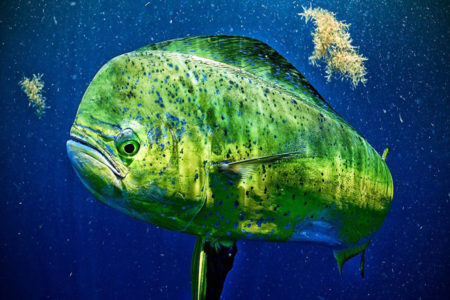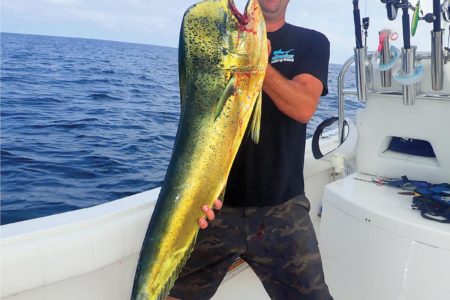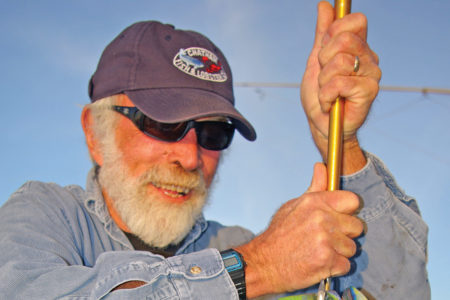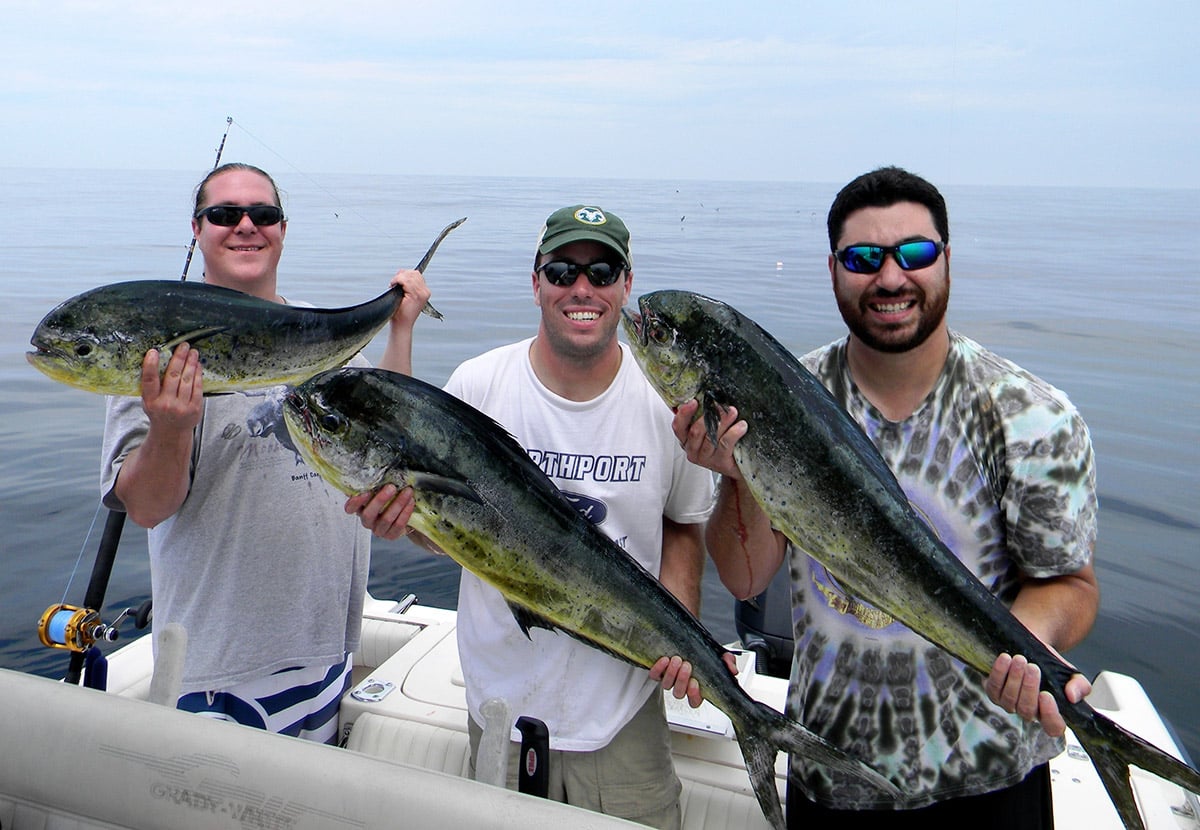
Take advantage of the latest electronic systems to broaden your options when making that long run to and from the Edge.
August and September usually see an increase of offshore activity among coastal anglers, with day tripping the 100-fathom line usually at the top of the die-hard bluewater angler’s wish list during extended periods of fair weather. Day tripping the edge offers more targets of opportunity than you might think. For Northeast anglers, the August/September menu includes the “big four” of the thunnus tribe, including bluefin, bigeye, yellowfin and albacore tuna. The billfish menu consists of both white and blue marlin, with the occasional surface-feeding swordfish that strays above the thermocline and is not down in the deep hunting squid during daylight hours. Other pelagics that will typically respond to a trolled bait or lure include wahoo and dorado. You should also be wary of outsized mako sharks that will either hit your trolled baits (especially birds and spreader bars) outright, or will wait for one of these lures to snag a tuna on the hook and then will easily chase them down for a free meal. I have come across makos via these two scenarios at least a dozen times during my day tripping forays. Some of the largest makos caught each year come from the 100-fathom areas up and down the Mid-Atlantic seaboard during the mid/late summer period, and there are a bunch of dedicated anglers that hunt for these 700 to grander sized behemoths. Big fish like these typically require large meals and chasing down a 10-pound bluefish just doesn’t do it. Biting off the tail of an unsuspecting blue marlin or swordie and then leisurely feasting on the rest of it is more to their liking and that’s the #1 reason these larger fish frequent the 100-fathom areas.
One of the biggest bonuses of fishing the continental shelf areas are the deepwater (250 to 400 feet) wrecks that you will usually pass going to and from the preferred fishing grounds. This translates to cod, pollock, hake, wreckfish (snowy grouper), barrel fish, wolffish and others. The challenge here is trying to hover over the wreck without anchoring, since currents are unpredictable and can spoil these plans. If you have a multi-outboard powered sportfisher, various manufacturers like Yamaha (Helm Master), Mercury (Joystick Piloting) and Evinrude (iDock) offer a connected steering system that can put the driver in total control via a simple joystick and allows you to keep the boat in place electronically. SeaStar also manufactures the Optimus 360 system that can work on a number of outboard types. Once you arrive at the shelf area, bottom dropping for tasty golden tilefish is yet another option on the menu. Finally, no trip to the edge would be complete without checking out the hundreds of lobster pot balls and high-flyers that typically dot the edge of the drop-off that are home to schools of dorado, wahoo and the aforementioned tunas.
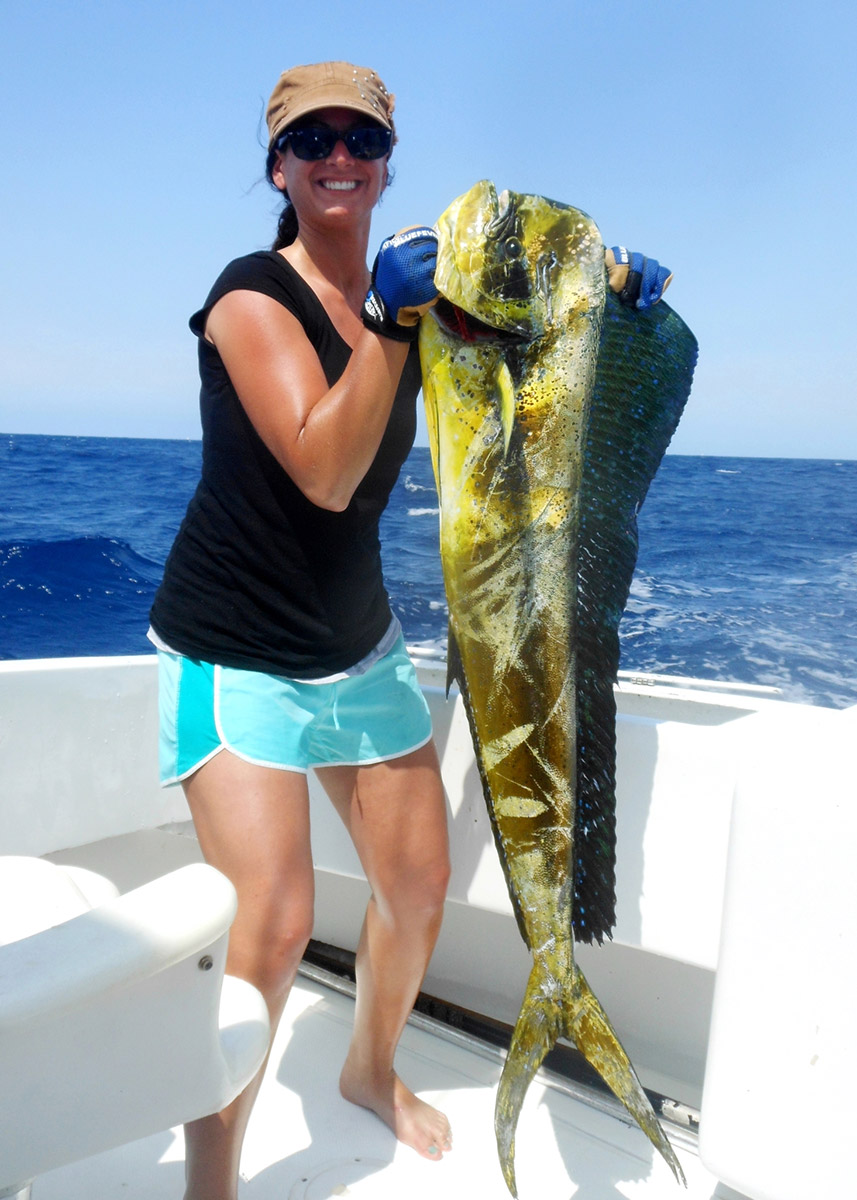
Planning Your Trip
The first thing that I am looking for when planning a long distance day trip is a stable Bermuda-High weather system. Doing a 200-mile plus day trip is hard enough itself, without having to fight elevated wind and sea conditions and a potentially nasty inlet on the way out or back. The old angler’s axiom, “when the wind blows from the east, the fish bite the least” definitely comes into play in the offshore game and more often than not, it’s not worth the punishment to tempt Mother Nature to head offshore during these conditions.
I always like to use the buddy system when planning and executing these trips and will frequently hook up with other boats that are also on the day trip schedule to hunt down pelagic action. You can cover more ground with cooperative boats and choose a remote VHF channel to share intel. It’s also good to know that someone has your back in case of a mechanical, fuel-related or medical problem.
As mentioned in past articles, I practice the “Noah’s Ark” philosophy of marine management – take two of everything onboard – two VHFs, two GPS Nav units, two transducers, etc. Bring a tool kit, extra oil, a stocked medical kit, extra flares for your distress kit, a ditch bag that’s close at hand, paper charts, LED flashlights and extra batteries, water, etc. You never know when you might need these things or have to share them with one of your buddy boats. Fill your fuel tank to the top, have an idea as to how much fuel you burn per hour at optimum cruising speeds, watch your fuel gauge during the course of the day and be sure to head for home when your fuel status dictates that it’s time to go.
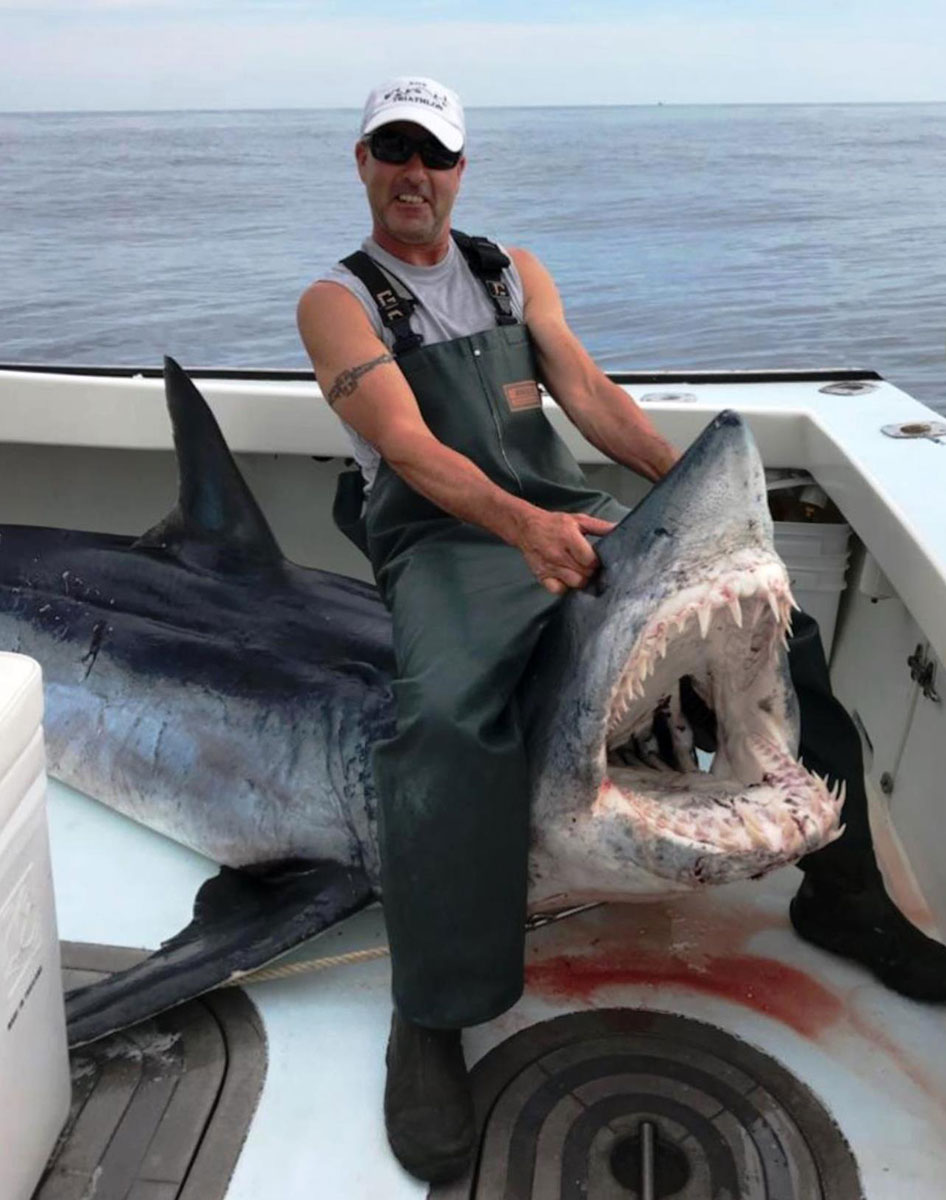
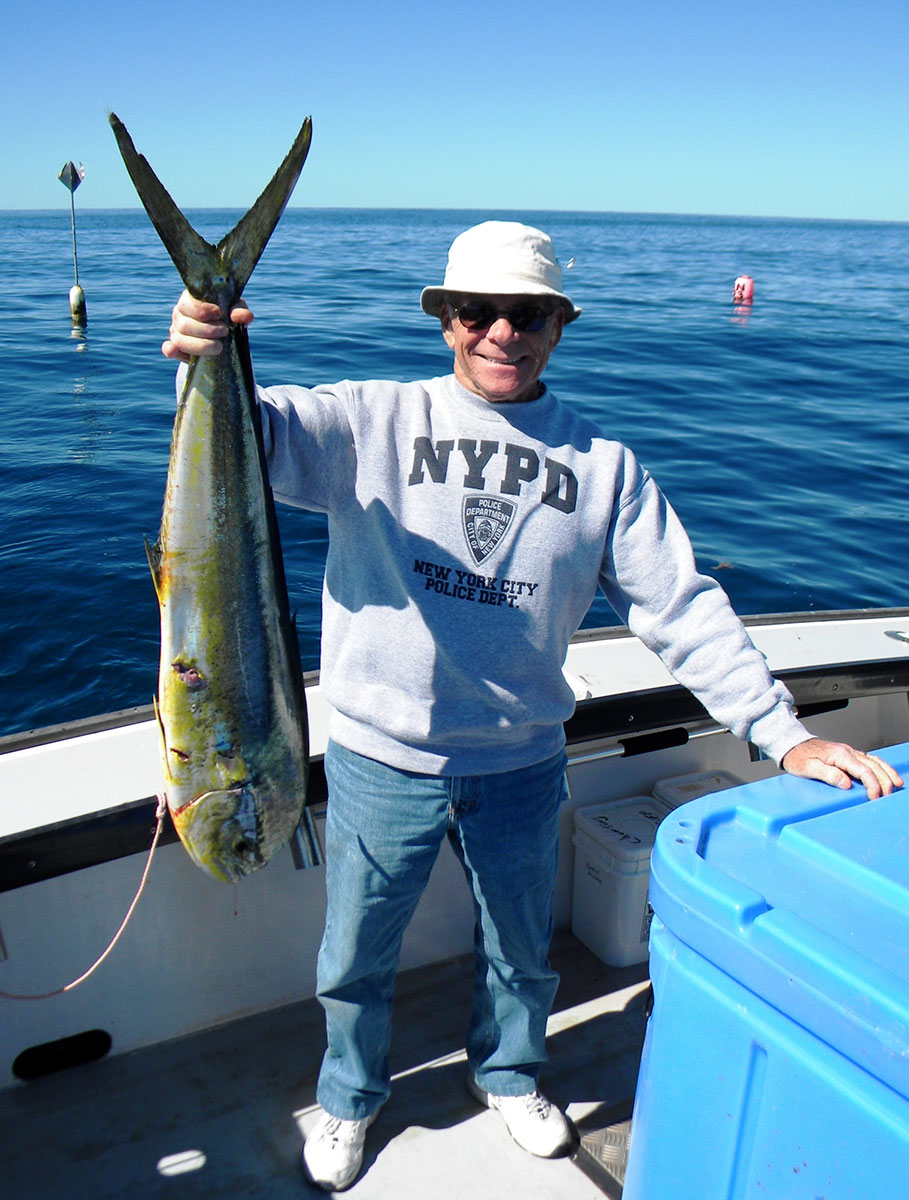
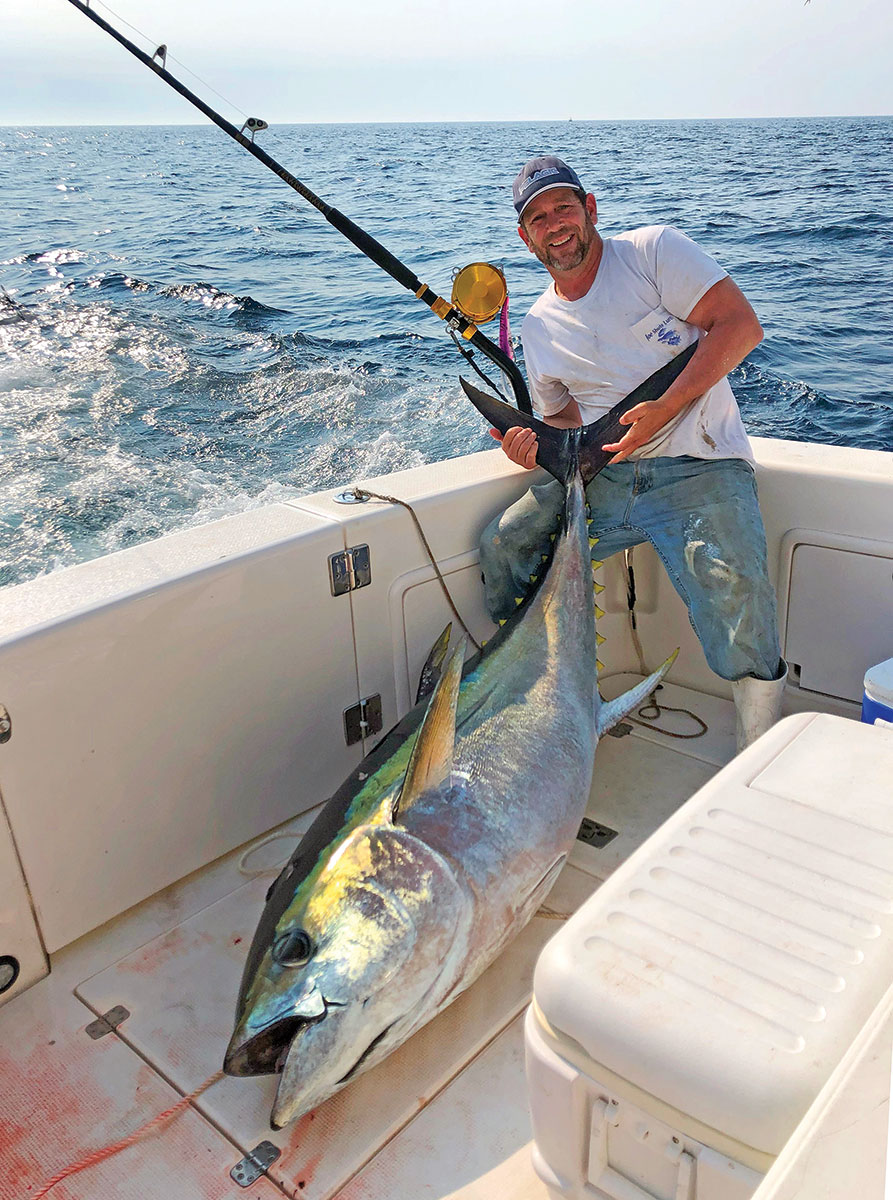
Angling Options
The first thing that comes to mind for most anglers is trolling. Whether it’s dragging squid or green machine spreader bars, daisy chains, ballyhoo, jets, Kona heads or whatever in your wake, trolling allows day trippers to cover more ground in their search for action. Trolling typically is more productive during pre-dawn, sunrise or when the sun sinks into the western sky. If you haven’t scored by 11 a.m. or so on the troll, it’s usually time to go for plan B.
Alternate plans at the edge include pot-hopping for mahis, which can be a total blast of non-stop, light-tackle action. Light baitcasting or spinning tackle is the preferred approach, using bucktails, squid, butterfish chunks or live snappers as bait. Some pots might be empty, but others nearby can be loaded up with pods of voracious dorado. Don’t get too close to the high-flyers if it can be avoided and be aware that the mahis can go off the feed in a heartbeat if one of them flashes the dreaded “silver” color, as this is the universal danger signal for the dorados, and they will go into an immediate defensive funk.
Drifting for tilefish on the shelf slopes between 450 and 700 feet can be yet another way to salvage a trip or to add to its variety. Tilefish prefer muddy bottoms and burrow themselves into holes and wait for an unsuspecting meal to come by. I use a medium speed retrieve (4.5:1) Maxel Ocean Max #9 dual drag reel spooled with 40-pound super braid to get my hi/low squid or clam baits down to the bottom, using 24- to 32-ounce bank sinkers or chrome balls. If your drift is too fast, you can adjust this somewhat with a drift sock, or you can employ your vessel’s pinpoint steering/position control system (Yamaha Helm Master, Mercury Joystick Piloting, Evinrude iDock, SeaStar Optimus 360) if you have one. There’s more detailed info on that later on.
One fallback plan that has saved many a trip for me is leaving early (2 to 3 pm) from the edge (depending on what we are doing or not doing) and hitting known hotspots on the way back home. The Coimbra wreck situated 27 miles south of Long Island’s Shinnecock Inlet and its surrounding 30- to 35-fathom area has saved my bacon more times than I can count. Bluefin and yellowfin frequent this area and there were quite a few trips where we struck out trolling at 100 fathoms only to hit the Coimbra for the late afternoon feed and scored with some impressive fish, and this year has been no different. Depending on where you call home port, there are likely numerous wrecks worth a stopover on your way back to the dock.
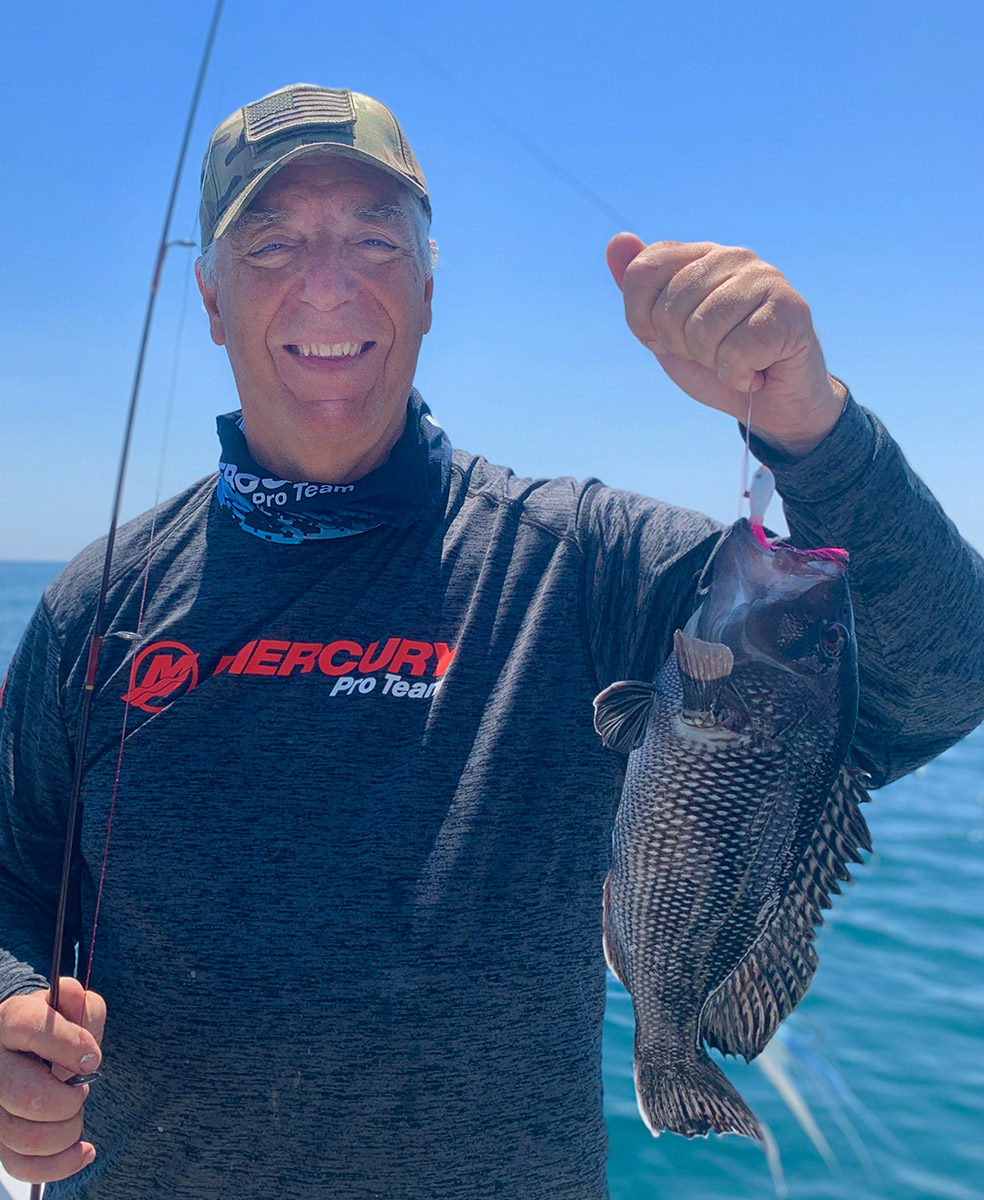
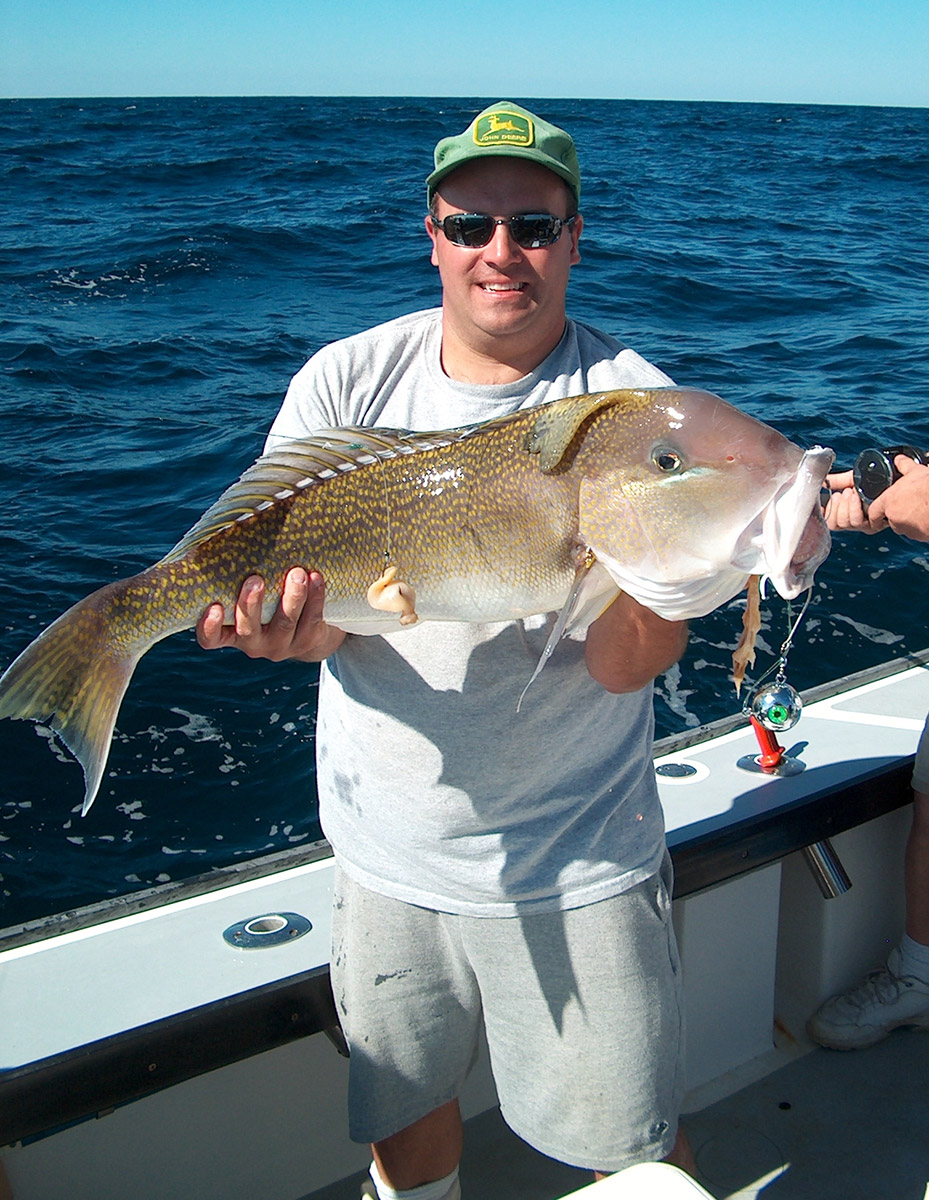
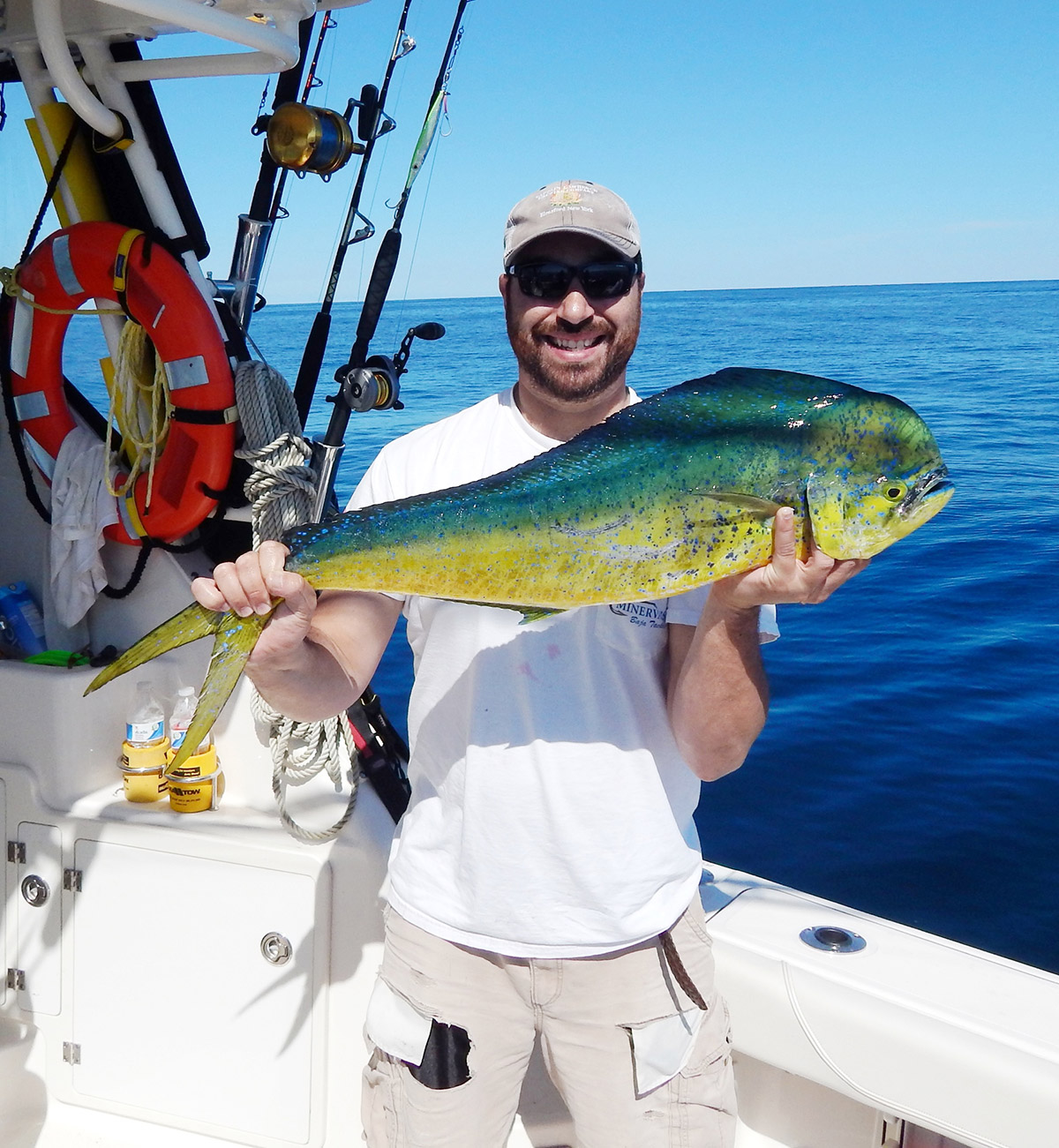
Tackle for the Task
There are only so many rods that you can bring on the boat, especially if you are planning to pursue the complete variety of angling options when day tripping the edge. You’ll need at least seven to nine trolling rods, a trio of deep-dropping outfits, a pair of heavy duty spinning rods or medium weight conventional sticks for casting a popper to surface feeding schools and/or jigging down deep, plus at least three lighter spinning or baitcasting outfits for pot-hopping for dorado. That’s a total of 17 rods if you max out and where are you going to put them all? When trolling, it’s important to keep the overhead rocket launcher and tower-side rodholders empty, to be able to stow the rods when clearing the deck after a strike. If you have eight rods out in the mix and one goes off, you will need at least seven empty spots to throw the idle trolling sticks. The other aforementioned outfits needed for casting, bottom dropping and pot-hopping will need to be stored in horizontal racks either under the gunwales, vertical racks alongside the center console, under-head racks in the hardtop, in the leaning port/rocket launcher, or in cabin racks. If space onboard is limited, or if you don’t have the requisite number of rodholders in the usual places, some of the outfits that you bring with you when day tripping the edge will need to have the ability to do double duty in this multi-mission scenario.
One way to do this to have two of the bottom dropping or casting/jigging outfits also switch hit as lightweight trollers for the short, close-to-the-transom baits. You can run jets, feathers or tuna clones in these positions, typically in the second wake, and just hope that a blue marlin or bigeye tuna doesn’t take a liking to your tiny appetizer. Bottom line is that you can take as many rods as you need, just be sure to have a safe and secure spot for them during the trip that keeps them out from underfoot, but allows them to be ready for immediate deployment.
My day tripping arsenal typically includes an array of lightweight-but strong Penn VSX/VISX 16s, 20s and 30s matched to Penn International V trolling sticks. If space onboard my away charters is at a premium, I might ditch two of the 16s and substitute a pair of Ocean Max or Avet bottom-dropping/jigging rods as those lightweight trollers mentioned previously. Those same rods might be tasked to perform a third mission, namely casting a large popping plug or swimmer to surface feeding tuna. Yet another task might be to send a chunk bait down into a bait ball of unknown pelagics 100 to 200 feet under the surface. For pot-hopping, Penn International 975 or 955 baitcasters have taken many hundreds of dorado to 35 pounds for my charter crews with no issues. If you are all thumbs with a baitcaster, any 4000-series spinner spooled with 30-pound super braid will do the job, with an added 5- to 10-yard topshot of 40-pound fluorocarbon leader to protect the braid from nicks and to elicit more strikes.
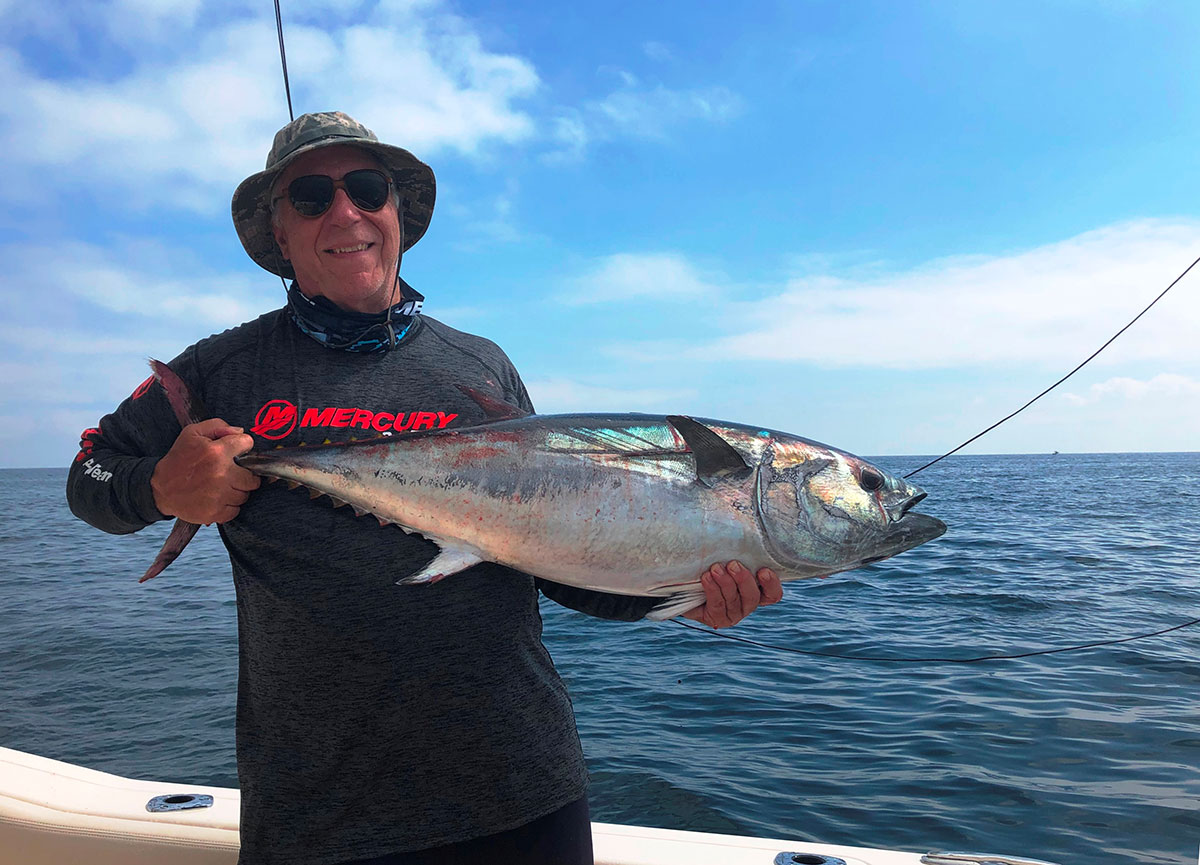
High Tech Assistance
It seems that there is an increasing number of hardcore anglers heading offshore in large, multi-engine outboard powered sport fishers. Many of these feature their outboard manufacturer’s version of fully integrated enhanced steering and control capability, which can be a big edge in the bluewater arena. Here’s a brief summary of what each one can do to up your game:
Yamaha Helm Master
The latest generation of Yamaha’s fully integrated Helm Master boat control system has new features that allow greater convenience and movement while in the various SetPoint modes. These new features are perfect for those who need more precise control of boat position. In StayPoint or FishPoint modes, one forward, rearward or sideward bump of the joystick will move the boat’s position 10 feet; additional bumps within three seconds of each other will move it up to 100 feet total. In StayPoint or DriftPoint modes, one twist of the joystick will move the boat’s bow heading angle by 5 degrees; additional twists within three seconds of each other will rotate the boat by up to 50 degrees total. A new feature called Pattern Shift allows the operator to troll below standard in-gear trolling speed by shifting into or out of gear to meet a desired target speed. In calm water, resulting minimum speed can be less than 0.5 mph. Thanks to joystick fine tuning, boaters can now adjust position and heading directly with the joystick.
Mercury JPO
The Mercury Skyhook digital anchor feature of the Joystick Piloting for Outboards (JPO) control allows you to lock your boat’s position using a GPS satellite antenna. Then, working with your engines and drives, Skyhook maintains your position and heading regardless of wind or current. This is ideal for holding your boat over a fishing spot, waiting for bridges to open or holding position in line at a fuel docking station. GPS technology and an electronic compass automatically control shifting, throttling and steering to maintain heading and position. It’s simple to operate, just place the levers in neutral and push the Skyhook button to lock in your position and heading. This is a standard feature on all Joystick Piloting for Outboards (JPO), Joystick Piloting for Sterndrives (JPS) and Zeus applications.
Heading Adjust provides Joystick operators with the ability to adjust the heading lock in 1- and 10-degree increments while SkyHook is active, making vessel control even more precise.
BowHook can be used to unlock heading and just maintain position, allowing the boat to point in whatever direction the winds and currents dictate. This feature is useful when a locked-in heading is not necessary.
DriftHook lets the operator maintain heading and unlock the position of the vessel, allowing winds and currents to move the vessel along. Adjustments of 1- and 10-degree increments can be made while drifting when bundled with Heading Adjust.
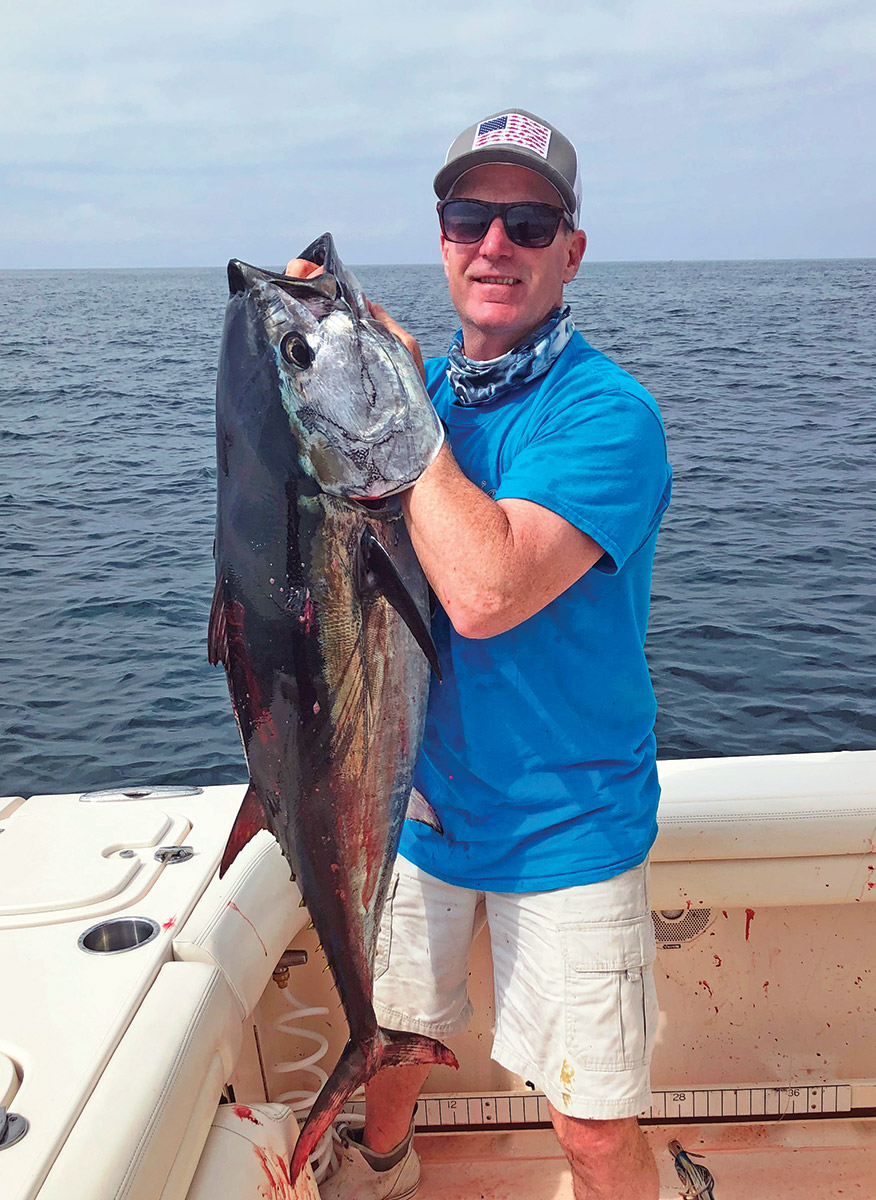
Optimus 360 by SeaStar
Optimus by SeaStar gives your boat powered by twin, triple or quad outboards a whole new dimension of control. By developing the joystick function to be intuitive, Optimus 360 allows you to move your boat not only forward and back, but also sideways, by pushing the joystick to the left, or to the right, and even, rotate on a dime, all with a simple twist of the joystick. Optimus 360 is designed for low speed maneuvering, and really excels in the marina, when pulling in and out of your slip or docking. Optimus 360 uses intelligent programming to minimize the amount of shifting required to complete a maneuver. With progressive throttling, the joystick becomes a natural extension of your hand. A light push on the joystick provides minimal thrust while more thrust can be applied by pushing harder on the joystick. The boost mode increases the RPM to give you more thrust when needed. Each component has been designed to complement the other, resulting in a seamless experience of steering control in virtually every situation on the water.
Evinrude iDock
iDock is the latest innovative addition to the Evinrude Intelligent Piloting System, a suite of Evinrude E-TEC G2 engine features designed to instill confidence in all boaters, by making their boat easy and intuitive to operate. Existing features include iSteer integrated dynamic power steering, iTrim automatic trim system, iControl digital shift and throttle and iLink mobile display interface. These intelligent features take the guess work out of operating a boat and offer users total boat and engine control. The iDock system, with an affordable price point and other industry-leading system innovations, allows users to easily maneuver their boats using a joystick for simple docking, in even the toughest conditions. The simplicity of the system requires much less time for operators to master. iDock is a fully integrated system that connects with the existing internal hydraulic steering feature of select Evinrude E-TEC G2 engines, reducing the cost of added parts, removing clutter on the transom and freeing up precious storage space. Because it leverages existing E-TEC G2 architecture, installation time is minimized, iDock models follow the same installation process as Evinrude E-TEC G2 engines and typically require less than one hour on the water setup. This allows Evinrude to offer the all-new iDock system for a reasonable MSRP of $5,999 for all iDock components, including the joystick, module and hydraulic hoses, but not including installation costs.
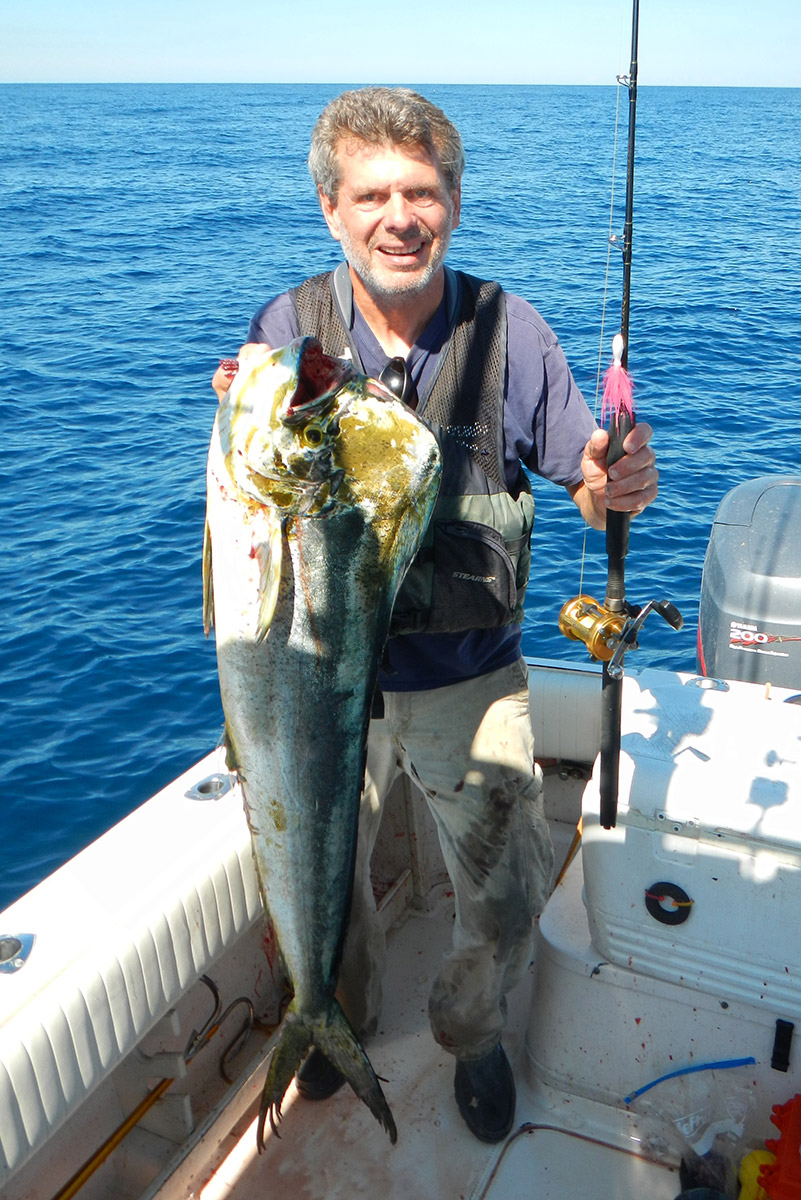
Some Final Thoughts
Day tripping the edge in a favorable weather pattern is one of the best trips on the offshore agenda. When you find the fish, it really doesn’t get any better, and you and the crew are in angling Nirvana. If plan A doesn’t work, don’t force it. Be ready to go to plans B and C if your initial efforts are not up to expectations. It’s better to come back with some fish rather than nothing. Keep a watchful eye on the weather, hook up with buddy boats whenever possible, be safe out there and enjoy the experience.

